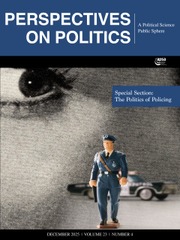Many thanks to Christopher McIntosh for his insightful comments and observations about our work. The review provides a detailed overview of the book’s key argument and findings, and we greatly appreciate the comments about the contribution the book makes to scholarly understanding of time and politics.
In the review, McIntosh identifies several areas that could be further developed and clarified. The first is the distinction between history and time. As McIntosh notes, entire volumes have been written on the nature and philosophy of time as well as the different types of time. We argue in our book that there are two components of time - one that is separate from human consciousness and one that interacts with it. The first is universal – an inexorable march forward that can be measured objectively. The second includes history, the present, and the future in their full richness. These elements, in our view, are shaped by human efforts to create realities that serve their ends. Although we have tried to distinguish between the fixed and malleable components of time, McIntosh’s point is well-taken and some additional clarification of our perspective would be useful.
McIntosh also suggests that we elaborate on the connection between discourse and policy attitudes. We agree that this would be an extremely fruitful area for further investigation. Specifically, it would be useful to better understand the causal mechanism at work. Although our experiments show a strong association between the treatments employed and policy attitudes, we can learn more about what caused the variation that we observed. In other words, we could explore the cognitive processes participants used to arrive at their answers. Did the additional information presented in the treatments change the balance of competing considerations for the participants? Or, did the new information in the treatments simply change the set of considerations available at the top of participants’ heads, as Zaller’s (1992) work would suggest?
Furthermore, how do the effects we uncovered generalize to the real world of information sharing? Are the effects we observed magnified by the increasingly partisan nature of media outlets and the strength of echo chambers in which information is consumed? Perhaps, there are heterogenous effects, as some people may be more susceptible to manipulation for various reasons. Additional experiments would certainly be useful to expand and refine the arguments in our book.
Finally, McIntosh suggests that our work engages additional literature, such as those on nationalism and temporality in politics. Indeed, there are several additional subtopics related to time and politics that connect to the key points in our book and are worth exploring. We look forward to continuing to explore these areas of study to develop additional insights into how historical and future-oriented narratives are constructed and contested within political discourse.


